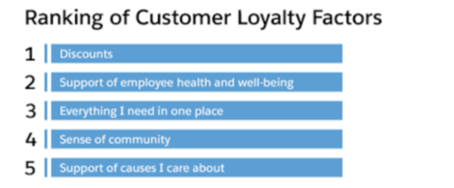As the oldest Millennials now approach 40, marketers are looking at this generation through a much more segmented lens. Those with kids, those without kids, married, single, caring for aging parents – all these life stages have measurable effects on buying behavior, and grocery in particular is one way that Millennials are scrutinizing their spending. Here we’ll explore some of the trends and how grocery marketers can pivot to meet changing expectations.
One of the things we know is that 1 in 5 grocery shoppers have switched stores during the pandemic, according to an Ad Week survey and reported in mid-May. What’s more, those shoppers are willing to make that change permanent if it means better access to inventory and improved eCommerce experience.
Though grocery revenue, as an aggregate, grew 14% in April versus the same month last year, grocery retailers should understand that their shoppers have been noticing every detail of their experience and might be making plans to change their behavior if their grocer isn’t meeting their new needs.
This is especially true of Millennial shoppers, an oft-studied group that is less brand-loyal than their older, Boomer parents. What should be in a grocery marketer’s rebounding strategy to hold on to, or even acquire, the millennial shopper?
When is comes to eCommerce, we didn’t know what we didn’t know.
Experts were way off a few years ago when they predicted that $54 billion would be generated in online grocery by 2020. Not even close. Millennials are often painted as the generation that expects everything to be personalized, so grocers and retailers of all stripes try to use purchase data to make suggestions. This might work for buying clothes but Millennials also want novelty. According to Kantar, 63% say they prefer to try new recipes and foods regularly. But what drove the adoption of online grocery during the pandemic was necessity – that’s it.. What we know now is that online grocery shopping just needs to fulfill basic needs, not be some AI driven, all knowing concierge for all your grocery needs. For budget and time-conscious Millennials, it needs to be easy, affordable and most of all, flexible. If grocers want to retain or acquire Millennial shoppers online, this needs to be the central part of their messaging for eCommerce.
Message toward safety and compliance
As most states enter some kind of reopening stage over the next few weeks, A PMTS.com study shows that 64% of Millennials are still concerned about contracting COVID-19, and cite it as their primary reason for staying in. But that doesn’t seem to apply to grocery shopping. Food is a necessity and online delivery windows are not reliable when you need something for dinner tonight. While you will turn to your owned and operated social channels to communicate with your earned audience, using partner amplification for paid social posts and branded content is key to reaching those similar audiences you want to acquire.
Lead with Discounts to Encourage Loyalty
Despite the average household income for Millennials being over $100K, 68% of them still report that money is tight. With student debt, mortgages, small children and other factors working together, Millennials are cash-strained.
According to Sales Force, the primary factor consumers report when asked what captures their loyalty is discounts

Our grocery retailers know discounts are what get people in the store, but the distribution methods have evolved and given retailers more chances to capture data and attribute those offer redemptions down to the campaign level. Check out a case study here from a grocer using sweepstakes to distribute offers, drive in-store traffic and attribute sales. Discounts and promotions need to be a central part of their digital strategy in addition to their regular circulars.
Sources: Salesforce.com; PYMTS.com; GroceryDive.com; AdWeek.com

